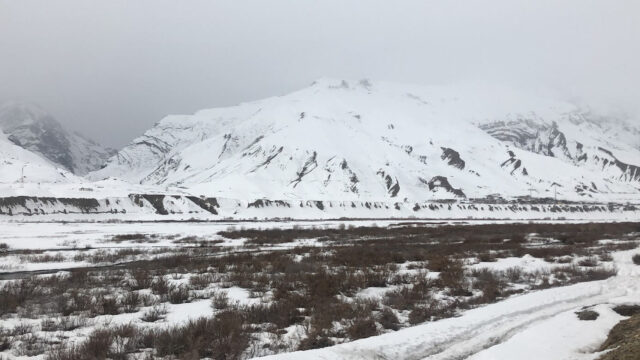
Hey, lovelies loads of love and light to all Namaste this is your author on travel apart from writing books I travel and when I travel I usually just have my phone to shoot. As the majority of the time, I travel solo.
Thank you so much for making my last vlog a huge success on a Rajasthan road trip of 3500 km
This is another special one as mountains are close to my heart and here I bring India winter wonderland Spiti valley for you to travel to this unexplored destination in the winters.
This blog will give you the following points
Introduction about the Lahaul and Spiti valley
Geographical location
The valley’s culture and people
Places to see and their importance.
My recommendation for must-see places
Spiti valley is pronounced as Piti in the Boti language
It is the cold desert mountain valley which is located high in the Himalayas. It is a part of the northeastern part of the north Indian state of India Himachal Pradesh. Technically Spiti” means “The middle land”, i.e., the land between Tibet and India.
Let me take you to a bit of the geological placement of this beautiful valley. Spiti valley is separated from Lahaul valley by the high Kunzum Pass, at 15,059 feet (4,590 m). Then there is a road that connects these two divisions of Lahaul and Spiti but is cut off frequently in winter and spring due to heavy snow. A southern route to India proper, via the Sutlej in the Kinnaur district and Shimla, is periodically closed for brief periods in the winter storms of November through June, but road access is usually restored a few days after the storm ends. The most populated centres in the Spiti valley are Kaza, Losar, Sumdo, Chango.
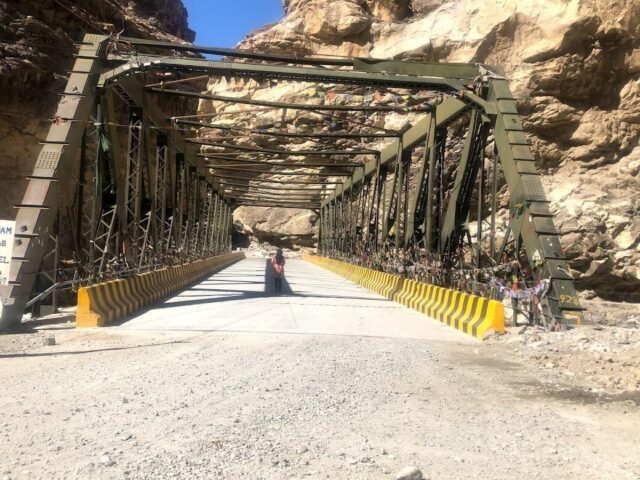
The culture of Spiti dates back to ancient times and influences Buddhism and Dalai Lama’s teachings. The people follow Vajrayana Buddhism. Spiti valley is the research capital for Buddhist monks and hence have strong dominance of monasteries. For example, you see huge and main centres at Key Monastery, Tabo monastery, these are one of the oldest monasteries in the world and Dalai Lama’s favourite. Another interesting fact when visiting Spiti is to see Pin Valley which is the only place of survival for Buchen Lamas of the Nyingmapa sect of Buddhism.
Also, if you want to experience the nomads of Spiti then you shall visit the valley in the summers when it is the home to hundreds of semi-nomadic Gaddi sheep and goat herders who travel as far as 160 miles nearby.
In the whole valley when you go on a ride you will see the Spiti river, gushing beautifully with a soothing sound this originates from Kunzum pass. the Spiti River then meets the Satluj near Khab and Namgia in Kinnaur district traversing a length of about 150 km. The entire valley is emerged from the tectonic plates occurrence and has uplifted from the ocean bed.
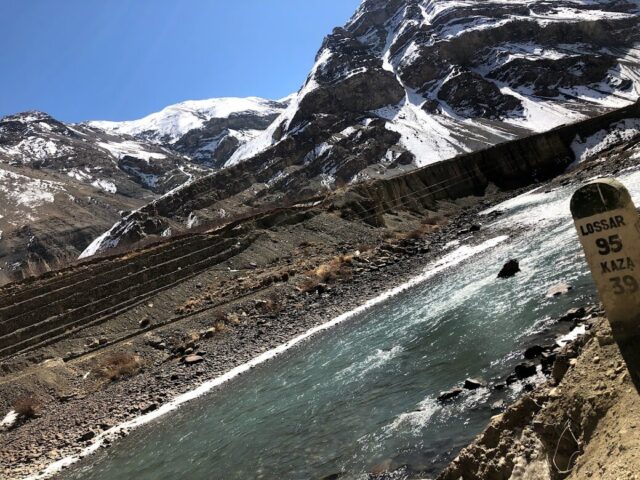
Now let me tell you what all you can see in the valley. What are the things to see in this beautiful valley in north India, particularly in the winters? For summer travel to Spiti valley I will make another video, so stay tuned on this channel and explore India like nowhere.
- Chicham Bridge – Asia’s largest bridge
- Dhankar Lake
- Gue – known for the mummy dating back more than 500 years
- Hikkim village – Highest Post office in the world
- Kaza – the biggest city in terms of amenities and population the Spiti Valley
- Key Monastery – The monastery is house to some 100 odd monks who receive education here. rare ‘Thangka’ paintings and ancient musical instruments ‘trumpets, cymbals, and drums in the monastery
- Kibber – a wildlife sanctuary
- Komic village – The highest motorable village in the world
- Kunzum Pass – the entrance for Lahaul District
- Langza village – The fossil village
- Lhalung Monastery
- Mud village – The coldest part of Spiti Valley
- Tabo Caves
- Tabo Monastery – This Pin Valley National Park monastery garnered interest when it celebrated its thousandth year of existence in 1996. The Tabo Monastery was founded by scholar Richen Zangpo

Among all these, my recommendation is to also visit National Highway 505 The NH 505
high altitude road, covers Kinnaur and Lahaul and Spiti districts of Himachal Pradesh, mainly running along Spiti River in Spiti valley. The highway from Kaza to Gramphu remains closed for 6–9 months in a year due to heavy snowfall and the closure of Kunzum La pass at an altitude of 4,550 m (14,930 ft).
this high altitude cold desert area of Lahaul and Spiti valleys of Himachal, receives negligible rainfall and the terrain is barren and treacherous, it’s prone to landslides and disruptions. The road is narrow and rough at places and crosses the high altitude Kunzum pass, for the bikers it is called Mecca as it requires good driving skills in mountains. It starts from Khab Sangam and it is 275 km long.
On this highway, you will witness Spiti at its best which is secluded and at peace. The gorges at NH 505 of Spiti river on the kibber and kailto road are worth watching and clicking for Instagrammers.
The clay pillars Enroute Tabo – at Lingti road are the perfect explanation of the oceanic uplift of the valley. For Chandartal there is diverge in between from Batal as this highway runs on the sideways of Chandra river. Later it joins up at NH 3 left at Gramphu.
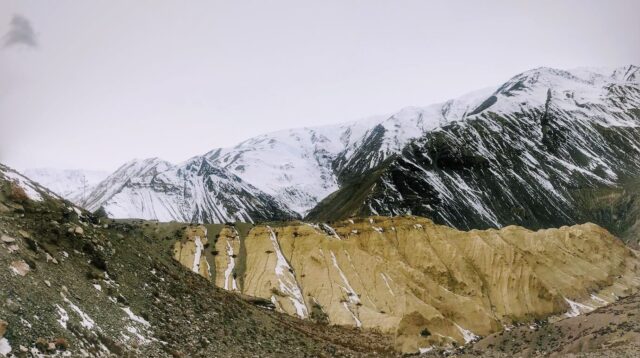
https://spiritedblogger.com/travel-blog-winter-spiti-valley-white-wonder/
If you are in Spiti then another recommendation is Lahaul too. When these two were separate then the capital of Lahaul was Kardang and the Capital of Spiti was Dhankar. Then Lahaul and Spiti were made one district in 1960 and now the main capital Centre is Keylong. It has no urban population and has one Vidhan Sabha constituency.
Let me give you a clear view of the structural sites of Lahaul and Spiti. I would say one shall visit the entire circuit of this district, it is another winter wonderland of India. The district has close cultural links with the Ngari Prefecture of Tibet Autonomous Region. Kunzum la or the Kunzum Pass (altitude 4,551 m (14,931 ft)) is the entrance pass to the Spiti Valley from Lahaul. It is 21 km (13 mi) from Chandra Tal. This district is connected to Manali through the Rohtang Pass. To the south, Spiti ends 24 km (15 mi) from Tabo, at the Sumdo where the road enters Kinnaur and joins with National Highway No. 5.
https://spiritedblogger.com/6-reasons-to-visit-spiti-valley-the-hidden-treasure-of-himachal-pradesh/
Spiti is barren and difficult to cross, with an average elevation of the valley floor of 4,270 m (14,010 ft). It is enclosed between lofty ranges, with the Spiti river rushing out of a gorge in the southeast to meet the Sutlej River. You find around 62 medicinal plants in this valley. Snow leopards are protected within the Pin Valley National Park and Kibber Wildlife Sanctuary. The Lingti plains are home to animals such as yaks and dzos. If you are in the months of Jan and Feb then you must enjoy the Losar festival (also known as Halda in Lahauli).
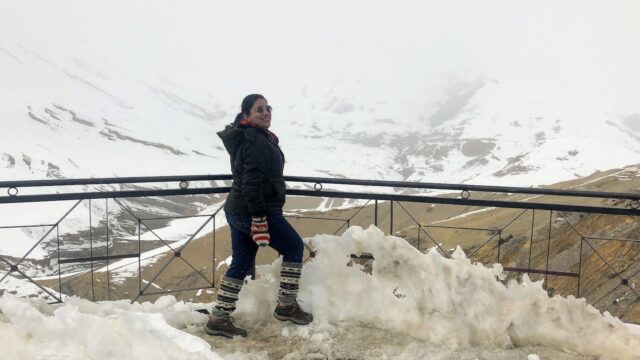
Talking about adventure seekers Lahaul and Spiti are for you guys.
Skiing is just not that popular right now, it is still under the honeymoon phase you can say. Bike rides, covering the entire Lahaul and Spiti circuit is what thrill-seekers do from all across the world. Marathons are conducted in summers and cyclists from all around the world ride and explore the valley.
The Spiti Valley is popular with trekkers due to the challenging nature of its treks. These treks take people to remote areas including rural villages and old Gompas, as well as wildlife trails. High altitude treks allow travellers to cross passes such as Parangla Pass (connecting Ladakh with Spiti Valley), Pin Parvati Pass, Baba Pass, Hamta Pass trek, Spiti Left Bank Trek. Popular trekking routes in the area include Kaza-Langza-Hikim-Komic-Kaza, Kaza-Ki-Kibber-Gete-Kaza, Kaza-Losar-Kunzum La and Kaza-Tabo-Sumdo-Nako.
Read more blogs here
Hop on to travel blogs and tips to travel on a budget here
Be a responsible traveler!
Catch up here:
Facebook | Instagram | YouTube | Goodreads | Artwork | Books | Journals – Diaries – Notebooks | Author Central Page | LinkedIn
For sponsorship and collaboration mail – spiritedblogger707@gmail.com
